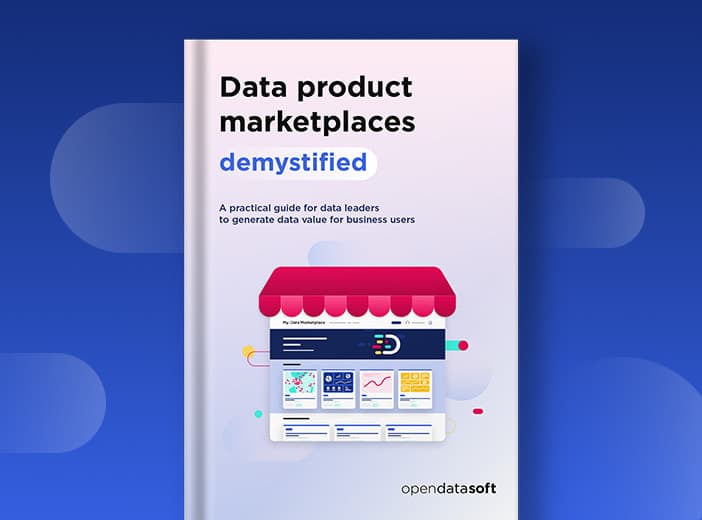Data projects
Ready to dive in?
Book your live demo today
+3000
+25
Countries
8,5/10
Overall satisfaction rating from our customers
[Ebook] Data Marketplaces demystified: A practical guide for data leaders to generate data value for business users
Download the EbookAn internal data marketplace (IDM) effectively and securely shares data through self-service with all employees across the entire organization. It centralizes all types of data asset (including data products, visualizations, and tabular data), and makes it available in an intuitive, easily discoverable and consumable way, without requiring technical training or support. This scales data sharing, eliminates data silos, and maximizes data value, all while preserving data governance and security.
Delivering the same user experience as an e-commerce website, the internal data marketplace simplifies the sharing and consumption of data, building trust among users, increasing collaboration, reducing administration, and enabling data owners to easily create and publish data assets such as data products.
The growth of big data means that organizations are generating and collecting ever-growing volumes of data. At a technical level this is being stored and managed through data warehouses and data lakes, and inventoried through data catalogs. These are used and run by technical and data experts.
Internal data marketplaces do not replace these technical tools, and often integrate closely with them. The difference is, that rather than being a solution for technical specialists, they provide a user-friendly, centralized space where any employee can easily access the data they need in their working lives, without any training or support. They provide a digital storefront to an organization’s data, enabling it to be effectively re-used at scale.
An internal data marketplace brings together three groups:
Internal data marketplaces enable these three groups to collaborate and drive forward data sharing and data democratization.
Internal data marketplaces deliver key benefits to organizations by scaling data use:
As with any marketplace, an internal data marketplace has to meet the requirements of both sellers (data owners) and buyers (employees consuming data), as well as the platform’s administrators.
There are three key challenges to building a successful internal data marketplace:
A successful internal data marketplaces needs to be built on key components and capabilities:

In today’s data-driven world, many organizations struggle to scale data consumption, with their data scattered across multiple systems, making it hard to access, understand, and leverage effectively. How can organizations transform this raw data into value, enabling it to drive decision-making, innovation, and AI adoption? This practical guide helps Chief Data Officers (CDOs) and data leaders to transform their data strategy and meet their goals by implementing self-service data product marketplaces.

How can you maximize the value of data and use it to achieve organizational objectives? That’s the ambitious goal of many data leaders as they plan for 2025. In an increasingly digitalized world, where data volumes are exploding, to generate value data leaders need to enable everyone in the business to easily access the right information in a seamless way. Data marketplaces are essential to this, delivering capabilities that move beyond traditional data catalogs, as this article explains.

How can energy and utility companies successfully share their increasing volumes of data with all stakeholders to help deliver on net zero goals? Our Energy User Club brought together leading utilities to discuss best practice around scaling data sharing and value.